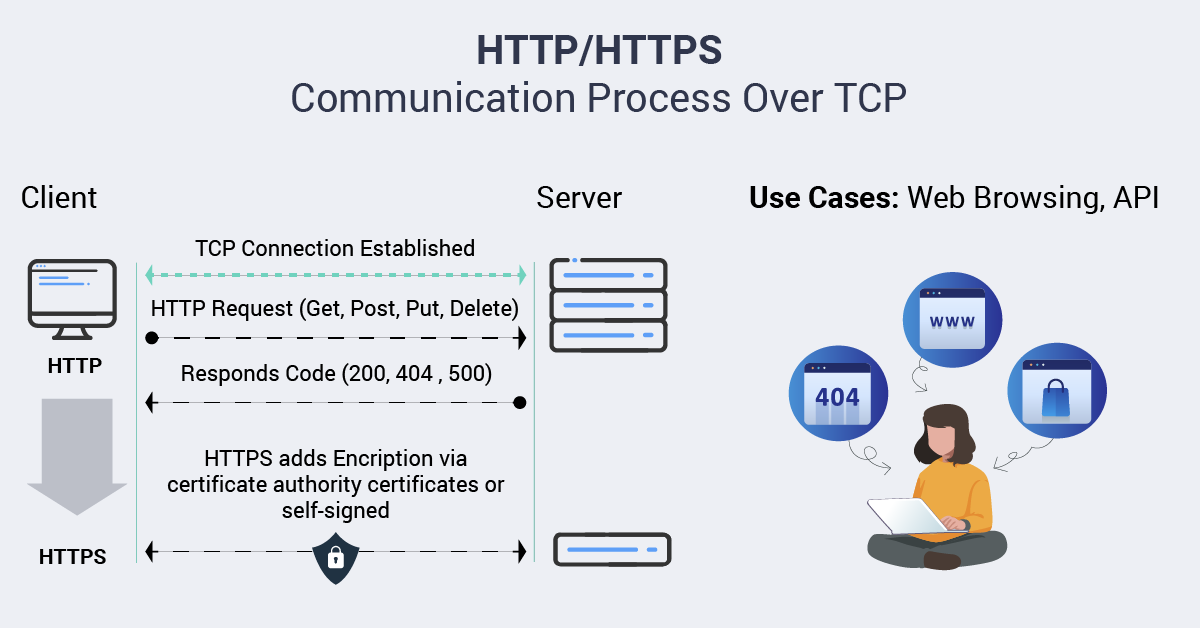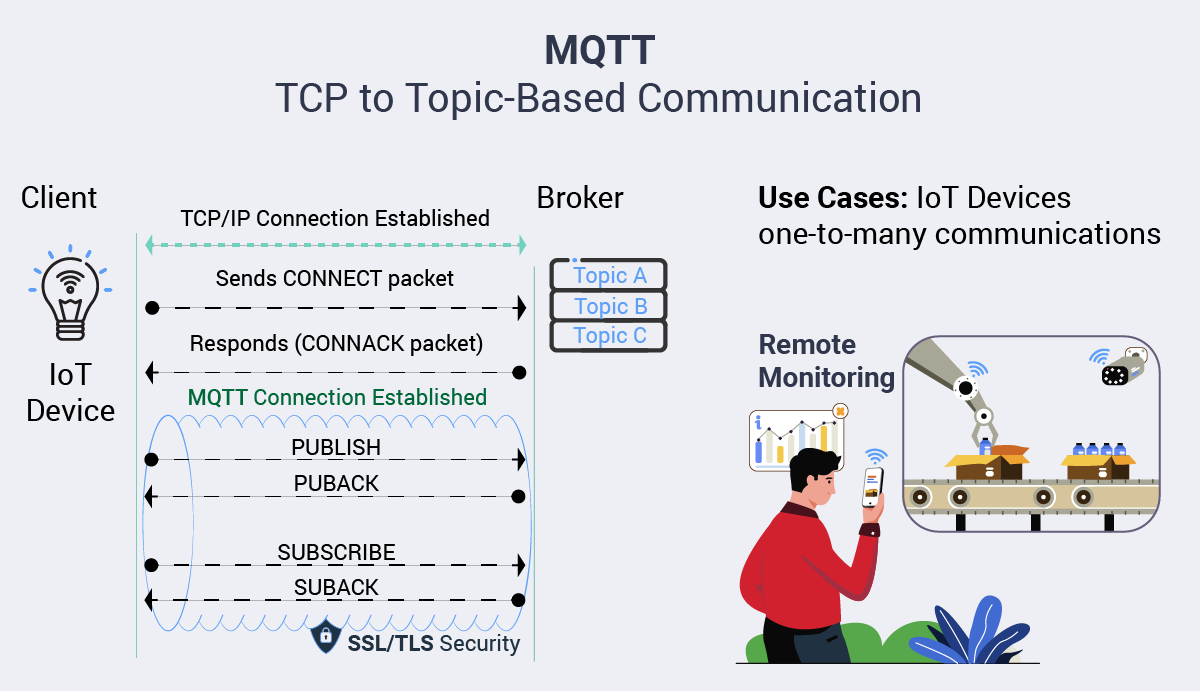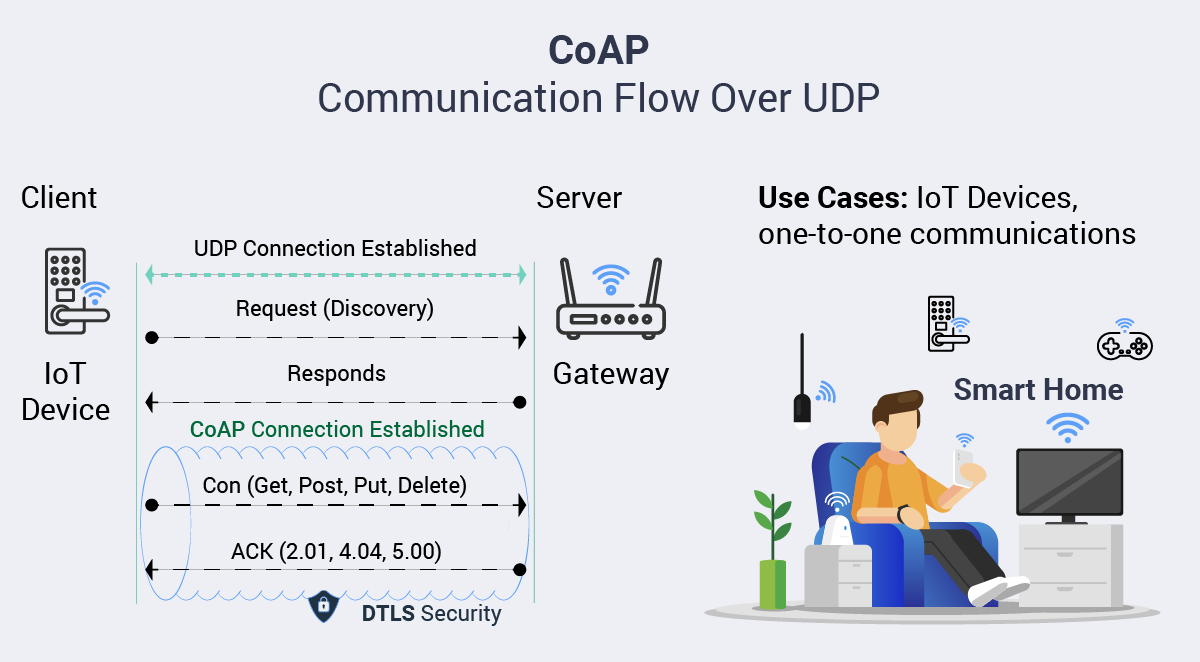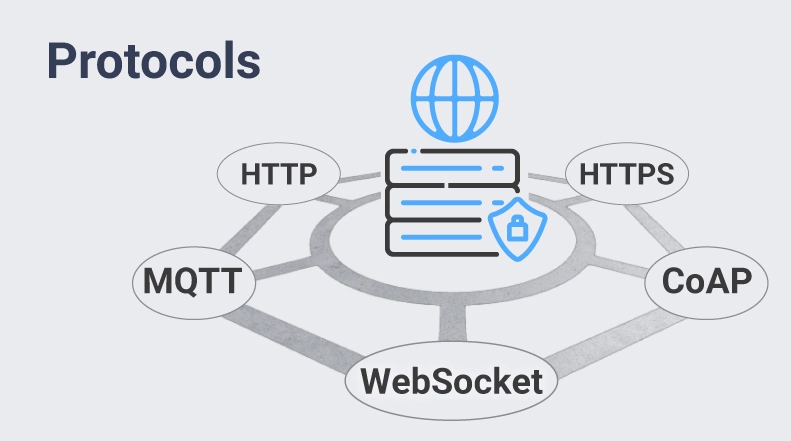Application Protocol Comparison
From HTTP to WebSocket, learn how these foundational technologies power everything from simple web browsing to complex real-time communications. Whether you’re a seasoned embedded engineer or a curious newcomer, this guide will enhance your understanding of how digital information flows across networks.
Comparative Overview of Key Application Protocols
| Protocol | Key Characteristics | Comparison with Other Protocols |
|---|---|---|
| HTTP/HTTPS | Hypertext transfer Protocol • Client-Server • Commands: Get, Put, 404 • Supports older text-based websites • Less complex • Less secure Hypertext Transfer Protocol Secure • Secure Client-Server • Standard Internet messaging transmission & formatting • Encryption via self-signed or certificate authority certificates • Protocol is document centric • Larger message size, larger headers | Vs. MQTT: • More reliable messaging • More complex • Uses TCP & UDP • Document centric • Larger messages, more information in headers Vs. CoAP: • Similar request-response model • Uses TCP, not UDP • Both follow URI structure • Header fields convey metadata about request-responsee • HTTP headers more extensive • Connection oriented and headers make it less efficient • More reliable messaging |

| Protocol | Key Characteristics | Comparison with Other Protocols |
|---|---|---|
| WebSocket | • Real-time protocol • Transport Layer: TCP • Security: TLS • Full-duplex communication between web client and web server | Vs. HTTP/HTTPS: • Sends and receives faster Vs. MQTT: • Web client applications • Greater overhead • Full-duplex and bidirectional • 1:1 message based • Session based |

| Protocol | Key Characteristics | Comparison with Other Protocols |
|---|---|---|
| MQTT | Message Queuing Telemetry Transport • Publish-Subscribe model • Devices/clients connected by server or MQTT broker • Commands: Connect, Subscribe, Publish, Unsubscribe, Disconnect • Supports QoS • Transport Layer: TCP • Security: SSL/TLS, Authentication • Protocol is data centric | Vs. HTTPS: • Requires broker and understanding of pub/sub topics • Less complex • Smaller messages, headers Vs. CoAP: • Uses TCP, not UDP • Publish-Subscribe topic model • More suitable for broadcasting to multiple subscribers • Focused on exchange of messages, no direct resource manipulation capabilities • Equipped to publish data to numerous subscribers efficiently…telemetry, monitoring, remote sensing • Topic-based structure to organize messaging…flexible and hierarchical message routing • Supports multi-node simultaneous connections |

| Protocol | Key Characteristics | Comparison with Other Protocols |
|---|---|---|
| CoAP | Constrained Application Protocol • Request-Response model • 1:1 architecture • Commands: GET, POST, PUT, DELETE • Good for low-power, resource constrained applications • Minimal resources needed • Uses UDP for transport layer • Multi-cast communication • Large scale networks • Asynchronous communication supports efficient sporadic connectivity | Vs. HTTPS: • Similar request-response model • Both follow URI structure • Header fields convey metadata about request-response • CoAP headers are smaller • More efficient…tokenization, lightweight tracking (less polling) • Less reliable messaging, but option for Confirmable messaging Vs. MQTT: • Uses UDP, not TCP • Request-response and asynchronous communication, direct resource interaction allowing for RESTful architectures • Direct resource interaction supporting GET, PUT, POST • Coupled with RESTful APIs….focused on monitoring and controlling IoT devices • Leverages URI structure to identify resources • MQTT is 1:1 communication |

Kickstart your innovation with CEL Wireless Modules today!
CEL’s has a range of wireless modules, designed to seamlessly integrate with key network protocols like HTTP/HTTPS, WebSocket, MQTT, and CoAP. Whether you’re developing for complex real-time communications or simple web browsing applications, CEL has the right tools to boost your project’s efficiency and reliability.
Visit our website to learn more about us and our products, or contact a CEL expert today to discuss how our wireless modules can be tailored to meet your specific connectivity needs and bring your IoT innovations to life.




